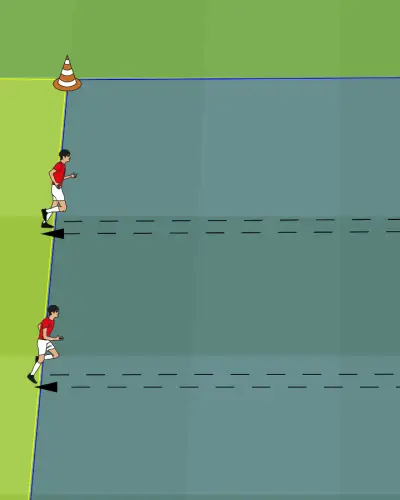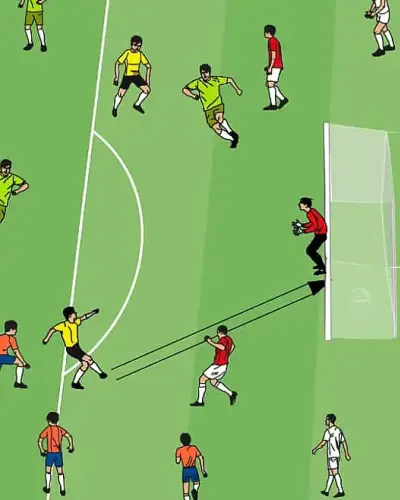Counterpressing – Jürgen Klopp’s “Best Playmaker”
Few top coaches are as closely associated with the term "counterpressing" as Jürgen Klopp. While many coaches today incorporate this tactical approach, Klopp remains its most prominent advocate, having implemented it since his early coaching days at Mainz. Counterpressing is also deeply embedded in the much-discussed RB DNA and was practiced as early as the 1980s by Arrigo Sacchi’s AC Milan. Before Klopp’s era, it was often referred to simply as "closing down" or "quick ball recovery." But what exactly is counterpressing, and where does the term come from?
What is Counterpressing?
To understand the origin of the term, we first need to dispel a common misconception. Many football fans—and even some coaches—believe that pressing means simply applying high pressure on the opponent in their defensive third. However, tactical experts know this specific strategy as "attacking pressing", where the goal is to win back possession high up the pitch when the opposition is in controlled possession.
By definition, pressing refers to aggressive, high-intensity defensive play aimed at disrupting the opponent’s build-up and forcing mistakes. Counterpressing ("Gegenpressing") takes this idea a step further—it is the immediate and aggressive attempt to win back possession after losing the ball.
The key requirement for successful counterpressing is a compact and structured positioning when in possession, while still maintaining sufficient passing distances. This ensures both fluid ball circulation and quick access to opponents in case of a turnover.
How Does Counterpressing Work?
- The player who loses possession is immediately pressured by the closest teammate.
- The goal is not necessarily to win back the ball immediately but to prevent the counterattack and force the opponent into an unfavorable situation.
- Teams can apply counterpressing in two ways:
- Man-oriented: Directly marking passing options and cutting off short passes.
- Space-oriented: Controlling the immediate area around the ball and utilizing cover shadows.
Since counterpressing involves aggressive forward movement, it also carries risks—especially if executed with insufficient intensity or if there are large gaps between players. If not well-coordinated, opponents can exploit spaces behind pressing players and create dangerous chances.
However, when implemented correctly—and when the team is suited to this philosophy—the benefits significantly outweigh the risks.
Klopp’s Counterpressing Philosophy
Jürgen Klopp’s counterpressing approach is primarily space-oriented. His squads, both at Borussia Dortmund and Liverpool, were carefully constructed to fit this system. Looking at his squad-building strategy reveals a clear pattern in the type of players he favors:
✔ Fast and agile attacking players
✔ Dynamic, offensive-minded full-backs
✔ Tall, physically dominant center-backs with strong aerial ability
✔ Aggressive central midfielders with high game intelligence
✔ A proactive, ball-playing goalkeeper (sweeper-keeper)
While this roster structure may sound like an ideal squad for any system, a deeper look into Klopp’s teams shows how specific his approach is.
Dortmund’s Counterpressing Squad (Early 2010s)
In his early Dortmund era, key figures such as:
- Marcel Schmelzer, Sebastian Kehl, Nuri Sahin, and Jakub Blaszczykowski
… were crucial to executing his game plan.
As the team evolved, other key players like:
- Mario Götze, Sven Bender, Kevin Großkreutz, Lukasz Piszczek, Ilkay Gündogan, and Shinji Kagawa
… became irreplaceable pieces of his high-intensity pressing system.
Liverpool’s Counterpressing Squad (2015–2022)
With greater financial resources at Liverpool, Klopp systematically built his ideal squad. Only a few players from the pre-Klopp era remained long-term contributors:
✔ Jordan Henderson
✔ James Milner
✔ Roberto Firmino
Over time, essential additions were made, turning the squad into a counterpressing powerhouse:
✔ Mo Salah, Sadio Mané, Virgil van Dijk, Fabinho, Georginio Wijnaldum, Andy Robertson, Alisson Becker, and Trent Alexander-Arnold
With this tailor-made squad, Klopp perfected his philosophy—leading Liverpool to Premier League and Champions League glory.
Conclusion: Is Counterpressing Worth the Risk?
Counterpressing is an aggressive yet highly rewarding strategy, regardless of the league level. However, not every squad is naturally suited to it. While some attributes like fitness and aggression can be trained, qualities like game intelligence and speed are harder to develop.
To be successful with counterpressing, certain player characteristics are essential—and clubs must carefully recruit and train players accordingly.
As Klopp famously puts it:
"Losing the ball isn’t the problem—what matters is how quickly we win it back!"






